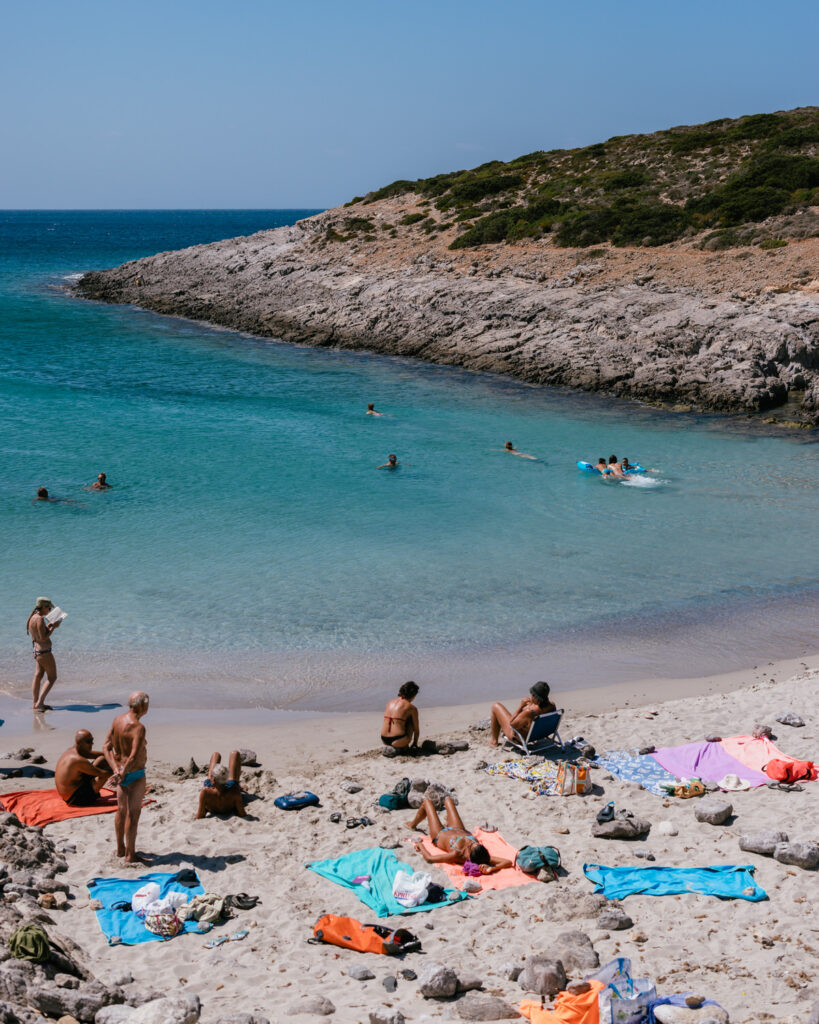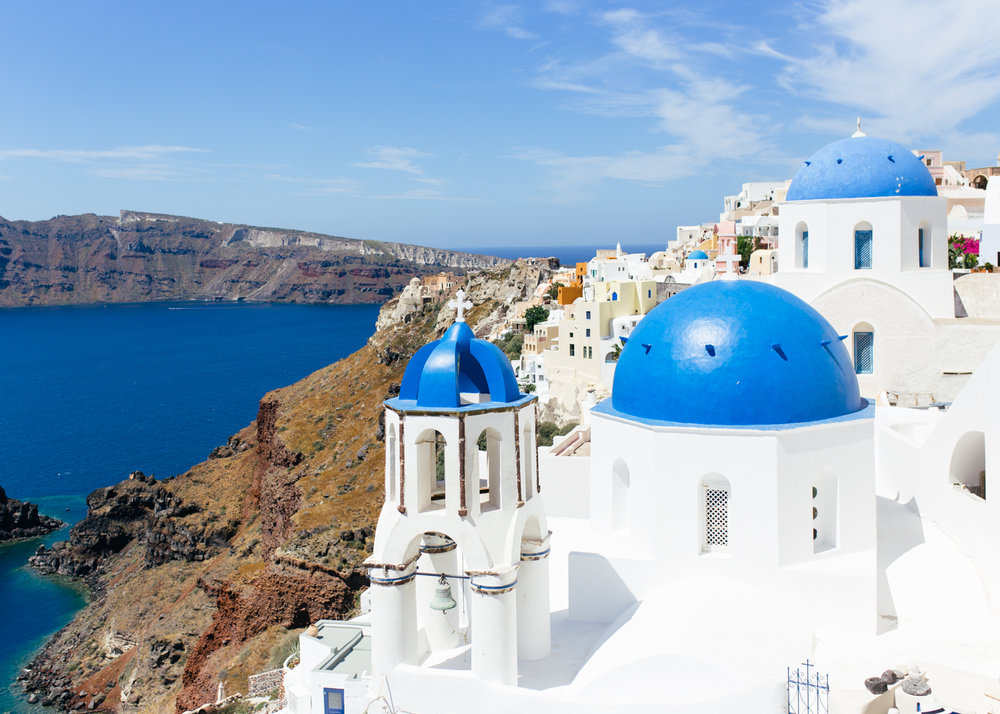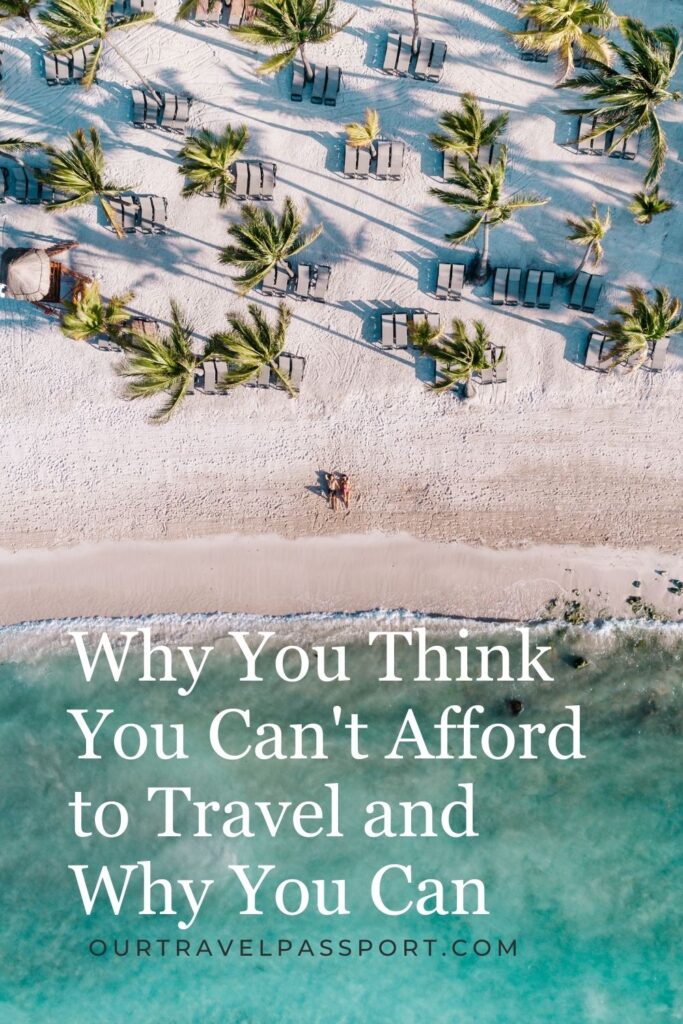You Can Afford to Travel, but it doesn’t seem like you want to…
Probably You: “Of course, I do. I want to travel. It’s all I want.”
Me: Prove it.
Okay, okay I know. That was a little rude but I’m trying to make a point. Probably more than any other message we receive, this one not only shows up in our inbox a lot, but it is frustrating. This is the message I’m talking about,
“Hi Ryan and Sam, I want to see the world more than anything! One day I hope to be able to travel too!”
These words, although nice, are hard to hear. We love getting messages from the OTP family and getting to know this amazing community, but that’s exactly why it’s hard to read messages like that. Here’s what I typically respond,
“Hi Sally, What do you mean you ‘hope’ to travel. You just said you want to see the world more than anything. What am I missing? You can travel. You don’t have to just hope. You can go anywhere you want and you can do it right now.”


Alright, so I say it put more softly than that but again, I’m still trying to make a point and that’s what I want to yell through the keyboard. But my point remains. You can travel. You can. I don’t know how else to make that more clear. You. Can. Travel. Here’s what’s gone wrong.
Somehow we as a society have grown to believe that certain things are only for certain people, but that’s not how the world works. Everything is available for everyone. Yes, that’s true. Despite what your mom tells you, despite what your “best friend” tells you, despite what you read on Twitter, and especially despite what your mind tells you, it’s true.
Nine times out of ten, what’s holding people back is money. They either say, “I can’t afford it.” or, “Traveling is for rich people.” So here we are. You’re reading this post to find out how you can afford it and I’m going to give you four steps that teach you how to do just that. But first, you need to believe you can afford it. You need to get rid of any preconception that it’s not “in the cards” or that you’re going to have to wait until something in your life changes. Get rid of that notion because it’s not true. What’s actually happening is that you can afford it, you’re just choosing not to.
Prioritize
Before we continue, I have to say that I am not a financial professional and this is not professional advice.
So everyone has some sort of income. The amount of that income and where that income comes from is different for everybody. It can be challenging to make more money, so the first thing I urge future travelers to do is to ask for a raise or start a side hustle. But the easiest thing to do is spend less. Everyone has a choice when it comes to money. We all get to decide what we do with it, although there are only two options: spend it or keep it. Now there are infinite ways to spend that money and there are also a ton of ways to “keep” or save your money. But it’s how you spend it and how you save it that’s important.
If you “want to see the world more than anything” then why do you eat out three times a week? If you hope to travel someday, then why do you spend your money on concerts or at fancy coffee shops every single morning?
It’s not a matter of if you have enough money. It’s a matter of if you want to travel more than you want those other things. It’s a matter of priorities.
When Sam and I got married and vowed to travel the world together we started to cut out activities that seemed fairly inexpensive, but when added up overtime would allow us to afford to travel. Take a look at all the things you have subconsciously prioritized over travel (i.e. everything) and add up everything you have mentally cut out from your future expenses. Take that number and remember it, because you’re going to need it for Step 2. You’ll be surprised by how much money you’ll start saving by cutting out unnecessary expenses you’ve for one reason or another prioritized.

Save
Now that you’ve prioritized your expenses, you should be spending a lot less and end up with a couple more bucks at the end of the month. It’s probably not enough to travel after just one month, so you’re going to need to put that money somewhere where it’s safe and will earn you interest. Sounds easy enough, but there’s a catch!
You’re going to save that money before you spend it on anything. At the beginning of the month you’re going to pay yourself that number you just came up with at the end of Step 1. That’s right. You’re going to pay yourself before you pay a single bill. It’s scary at first, but it’s the only way you can guarantee you contribute toward your travel savings.
When we started paying ourselves, we managed to pay ourselves 5% of our income and sometimes I’d challenge myself and pay ourselves even 10 or 15%. By some miracle, our minds and habits adapt to the amount of money we have left after we pay ourselves. We never missed any bills and we got more creative with how we had fun outside of travel!
Okay, so hopefully you’re sold on how important it is to pay yourself. I can’t stress enough how easy it makes things to pay yourself first and how hard it is to save if you just “see what’s left at the end of the month.” But what do you do with the money you’ve saved.
We always want our money to be working for us so we like using online savings accounts that pay high interest rates. We use Marcus: By Goldman Sachs and it earns us 4% every year. There are some that offer up to 4%, but we like Marcus because it has a $0 minimum balance so we’ve never been worried about fees. Over 2% interest is huge! Most savings accounts from your standard bank will earn you 0.1% per year, which means you essentially lose money when inflation is taken into account. The only downside of an online savings account is that transfers take slightly longer, but I see that as a benefit. It makes it slightly harder to just pull out all your money and give up on your savings.
Credit Cards
Credit cards are king! Properly using one is key to winning the travel game. At some point since the invention of credit cards we’ve developed a fear of using them. It’s probably because debt can be dangerous, but let me be clear, using a credit card doesn’t mean you’re going to be in what you typically think of as debt.
This is how a credit card works. You buy an item for $10. The vendor gets about 97% of that and the other 3% goes to the credit card company. You generally get some sort of cash back or “miles/points”, depending on what card you’re using it typically sits at an amount between 1 and 3% of the purchase, but we’ll get to talking about miles later. So when you buy that $10 item. You get a charge on your credit card statement for $10. When that statement period ends on a predetermined day of the month, you then have until the close of the next statement period to pay off what you purchased on the previous statement period. If you pay it off anytime before the close of that statement period, then all is well. But if you don’t, then you’ll have to start paying interest at an extremely high rate. This is how people go into debt. They spend recklessly, because they’re credit card isn’t linked to a checking account that would stop them from spending when they run out of money like a debit card. would. Instead, it has a limit which typically would start at $5,000 for the average person. Some people see that limit as how much cash they have available to them. This is wrong.
Again, in a separate paragraph, let me reiterate that. If you see your credit card limit as cash, you will most likely end up getting into severe credit card debt.
I know that sounds scary, but here’s what you do instead. You set a reminder on your phone or computer or on a sticky note on the fridge to pay your credit card bill every single week. Pay the entire card off every week and be aware of how much money you have in your checking account. If there is no money in your checking account, then there’s no money to pay off your credit card. If you follow these principles, you will not go into credit card debt.
Why wouldn’t you just use cash or a debit card? Remember, you can get between 1 and 3% of your money back all the time. That’s essentially a permanent discount. And just wait until I tell you how much money we get back with the cards we use, 1-3% is modest for some categoies.
Sam and I have optimized our card usage to get both points and miles for travel and cash back to simply save money. Just last year, we earned well over $3000 of cash back or equivalent value in miles.


Here are the three cards we use every single day:
To Travel
The Chase Sapphire Reserve is the ultimate travel card. If you travel, it’s worth it to have in your wallet. It is chock-full of perks like baggage, car rental, and trip interruption insurance and it earns a lot of points. When you use the Chase Ultimate Rewards portal to buy flights, which is super easy to use, you get 1.5x the value. For example, 50,000 points would buy you a $750 flight.
- Pros:
- 3% points back on travel (4.5% when used toward travel).
- 3% points back on dining (4.5% when used toward travel).
- $300 annual travel credit.
- Free Global Entry or TSA Pre-Check credit.
- Complimentary Airport Lounge Access at select airports.
- Think of all the money you’ll save on airport food.
- No foreign transaction fees.
- Cons:
- 550 annual fee
- It’s essentially $250 after you get your $300 credit. We make all that back and much more each year.
- 550 annual fee
To Save
American Express Blue Cash Preferred
The Blue Cash Preferred is an amazing card. It is purely for cash back purposes, and it is well worth the $95 annual fee because the cash back values are so high. This isn’t a travel card, so we don’t recommend taking it with you while you travel overseas. See below:
Pros:
6% cash back at grocery stores (up to $6,000).
6% cash back on streaming subscriptions.
3% cash back on transit (rideshare, parking, tolls).
3% cash back at US gas stations.
1% cash back on other purchases.
Other cash back opportunities.
Easily obtainable spending bonus.
Cons:
Foreign transaction fees.
$95 annual fee.
We do have a referral link for this card that allows you to get access to a $300 spending bonus as opposed to the standard $250 bonus. It also helps us out, because Amex sends us a little kick back as a thank you at no cost to you.

To Travel and Save
- The Venture is what we use for everything else not mentioned above. It gets us a flat 2% back on everything. The best part about this is that the points are incredibly easy to redeem. Rather than waiting for a good opportunity to purchase a flight with points like some travel cards, you can simply use your miles to erase old travel purchases. I find the definition of “travel” is rather broad and in addition to plane tickets and hotels it includes things like Ubers, Lyfts, and other public transportation. I put this under “both” because although it’s a travel card, the miles are pretty much as good as cash.
- Pros:
- 2% back (when used to erase travel purchases) on all purchases.
- 10% back when booking through Hotels.com.
- Earn $300 worth of miles to erase travel purchases if you spend $3,000 within the first 3 months of opening account.
- $0 intro for the first year.
- No foreign transaction fees.
- Rental car insurance and other travel benefits.
- Cons:
- $95 fee after the first year.
We also have a referral link for this card that helps us out if you decide to go with this car. Capital One sends us a little kick back as a thank you for recommending new credit card holders at no cost to you.
Here are the other cards we own with some of their special perks:
- Southwest Rapid Rewards Premier Business:
- Southwest Rapid Rewards Premier:
- If you hit the spending bonuses at the right time on this card, you can end up with 125,000 points or close to it. That’s a big deal because Southwest gives you a companion pass for the remainder of the current year and entire following year. Sam’s been flying for free as my companion on Southwest since early 2018.
- Platinum Delta SkyMiles
- We initially got the Gold Delta SkyMiles card but after getting the bonus, we never found a use for it with our other three daily cards so we downgraded to the Blue Delta SkyMiles card because it has no annual fee. Just recently we upgraded all the way to Platinum Delta SkyMiles because we were about to fly to Mexico on Delta and it cost us $60 each way to check a bag. The card gives us free checked bags and it also offers an annual companion pass. We figured the free checked bags and the free plane ticket will more than makeup for the $195 annual fee. If it doesn’t, we’ll downgrade next year.
- Chase Freedom
- Sam originally got the Chase Sapphire Reserve when I got it, but after the initial year, it didn’t make sense to have two in the same house, so she downgraded to the no annual fee Chase Freedom to take advantage of it’s rotating bonus categories. Every quarter it offers 5% cash back on rotating bonus categories. These points can then be transferred to my Chase Sapphire Reserve account where they can be redeemed for 1.5x their value or (7.5% of the initial purchase).
If you have any questions about how we have taken advantage of the above perks, feel free to reach out and ask. I’m happy to help you make it happen for you! These things can make your travels so much nicer and help you save so much money.
If you’re worried about what my credit score is. It’s doing great. Contrary to popular belief. Opening credit cards doesn’t hurt your score. Your score is based on a couple things: average length of credit line (the longer you’ve had them the better), longest credit line, amount of credit used, on-time payments, number of accounts (the more the better), etc.
We’ve gotten all these cards over the last five years. They are super helpful, but they were most impactful in the beginning before we started working with travel brands all around the world. Now we’re blessed enough to be in a position, where the credit card points can just supplement our travels as opposed to us heavily relying on them.
Now that you’ve saved money for your trip and made the whole thing cheaper by using the best credit cards out there, you need to know the best ways to save money while traveling.


Saving Money While Traveling
Avoid ATM Fees
We discussed savings accounts, but sign up for a Schwab Bank High Yield Investor Checking Account. In my opinion, this is the best checking out there because they reimburse you for any and all ATM fees. Say goodbye to paying $5 to pull out $20! Also, it earns 0.37% interest which is exactly 37x more than most checking accounts. I’ve had it for about four years and have never been charged a fee once! Plus, having a Schwab account is a great way to get into investing.
Avoid Foreign Transaction Fees
Foreign transaction fees come with using credit and debit cards in other countries, but only if you’re using the wrong card. Almost all of the cards listed above have zero foreign transaction fees. Between a foreign transaction fee free credit card and a Schwab debit card, you should never have any financial fees of any kind while traveling!
Ask to Get Charged in The Currency of the Country You’re In
Occasionally, you’ll be asked whether you want to be charged in, for example, US Dollars or Euros. When in Europe, make sure you always say Euros. Generally the exchange rate of your home bank is going to be better than whatever exchange rate they would give you at the point of purchase.
Find Flights Using Dollar Flight Club
Flights are generally the most expensive part of travel. We are premium members of Dollar Flight Club so we get alerted anytime there are cheap flights from our home city to our favorite destinations. We’ve found $300+ flights to Europe and $500 flights to Bali using DFC!
You can sign up for a free membership to get a taste of the kinds of deals you can get here.
Pack Snacks
It seems simple but it’s a game changer. Sam and I always pack at least a dozen RXBAR’s when we go anywhere. There’s nothing worse than a combination of hanger and traveling. You’ll end up making a bad decision and eating at the closest place to you, which probably means, low quality food and high prices. Do yourself a favor and pack snacks so you have food in the airports and while touring. You won’t regret it.
Plan Ahead
This may seem obvious, but it’s crucial. When you haven’t planned ahead, you inevitably spend more money because you lose all flexibility and some decision making power when it comes to planning activities on a trip. One example of how pre planning and researching saved us money was during our trip to Paris. We found out online that Friday night’s are free at the Louvre if you’re under 26 and the first Saturday night of every month is free for all visitors. We also discovered that you can visit Park Guell in Barcelona in the morning without having to pay. We’ve saved countless dollars by just being a little prepared.

Me: Do you believe you can afford to travel now?
You: Yes. Yes, I do.
That’s at least the conversation I hope we’re having right now. Even without all the tools in steps two through four, you can simply prioritize travel. When someone tells me they can’t travel, it takes me all of two seconds to tell them why they think that. They usually decided to rent a bigger apartment, get a second car, or they are simply just too fancy. Too boujee, if you will. I bet if you look, you can find a way to spend less and travel more.
It’s been our mission since the beginning of Our Travel Passport to help people travel more and travel better and affording to travel is a huge part of this. Even the aspiring travel bloggers in our community who are working towards getting paid to travel should implement these techniques into their financial strategy. It’s important, when you’re running a business to keep costs low and finding ways to make travel cheaper is fundamental to that. We’ve been getting paid to travel for a couple of years now and we haven’t let up on our money saving strategies. It’s key to sustaining our company and our lifestyle and that’s exactly what we intend to do! We hope you’ll join us!
Pin It:



